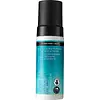What's inside
What's inside
 Key Ingredients
Key Ingredients

 Benefits
Benefits

 Concerns
Concerns

 Ingredients Side-by-side
Ingredients Side-by-side

Water
Skin ConditioningDihydroxyacetone
Skin ConditioningSodium Laureth Sulfate
CleansingPropylene Glycol
HumectantCocamidopropyl Betaine
CleansingGlycerin
HumectantPPG-5-Ceteth-20
EmulsifyingCoco-Glucoside
CleansingIsopentyldiol
HumectantDivinyldimethicone/Dimethicone Copolymer
Phenoxyethanol
PreservativeParfum
MaskingSodium Chloride
MaskingBetaine
HumectantSodium Metabisulfite
AntioxidantPoloxamer 338
EmulsifyingPPG-12/Smdi Copolymer
EmollientHydrolyzed Jojoba Esters
Skin ConditioningTocopherol
AntioxidantCaprylyl Glycol
EmollientDecylene Glycol
Skin ConditioningGeraniol
PerfumingLinalool
PerfumingC12-13 Pareth-23
CleansingC12-13 Pareth-3
EmulsifyingLimonene
PerfumingAlpha-Isomethyl Ionone
PerfumingWater, Dihydroxyacetone, Sodium Laureth Sulfate, Propylene Glycol, Cocamidopropyl Betaine, Glycerin, PPG-5-Ceteth-20, Coco-Glucoside, Isopentyldiol, Divinyldimethicone/Dimethicone Copolymer, Phenoxyethanol, Parfum, Sodium Chloride, Betaine, Sodium Metabisulfite, Poloxamer 338, PPG-12/Smdi Copolymer, Hydrolyzed Jojoba Esters, Tocopherol, Caprylyl Glycol, Decylene Glycol, Geraniol, Linalool, C12-13 Pareth-23, C12-13 Pareth-3, Limonene, Alpha-Isomethyl Ionone
Water
Skin ConditioningGlycerin
HumectantCyclopentasiloxane
EmollientDipropylene Glycol
HumectantDimethicone
EmollientCyclohexasiloxane
EmollientYeast Extract
Skin ConditioningSodium Hyaluronate
HumectantCeramide EOP
Skin ConditioningCeramide Eos
Skin ConditioningCeramide AP
Skin ConditioningCeramide NP
Skin ConditioningCeramide Ns
Skin ConditioningSambucus Nigra Fruit Extract
AstringentHydrolyzed Silk
HumectantSodium PCA
HumectantTocopherol
AntioxidantAscorbyl Palmitate
AntioxidantCaprooyl Phytosphingosine
Skin ConditioningCaprooyl Sphingosine
Skin ConditioningSaccharide Isomerate
HumectantSaccharomyces/Magnesium Ferment
Saccharomyces/Iron Ferment
Skin ConditioningSaccharomyces/Copper Ferment
Skin ConditioningSaccharomyces/Silicon Ferment
Skin ConditioningSaccharomyces/Zinc Ferment
Skin ConditioningOlea Europaea Leaf Extract
PerfumingMethyl Gluceth-20
HumectantEthylhexylglycerin
Skin ConditioningLauryl PEG-9 Polydimethylsiloxyethyl Dimethicone
Skin ConditioningCholesterol
EmollientSodium Chloride
MaskingSodium Citrate
BufferingCitric Acid
BufferingBehenic Acid
CleansingPropylene Glycol
HumectantCeteareth-25
CleansingButylene Glycol
HumectantDimethicone/PEG-10/15 Crosspolymer
Cetyl Alcohol
EmollientDisodium EDTA
Sodium Benzoate
MaskingPotassium Sorbate
PreservativePhenoxyethanol
PreservativeMica
Cosmetic ColorantWater, Glycerin, Cyclopentasiloxane, Dipropylene Glycol, Dimethicone, Cyclohexasiloxane, Yeast Extract, Sodium Hyaluronate, Ceramide EOP, Ceramide Eos, Ceramide AP, Ceramide NP, Ceramide Ns, Sambucus Nigra Fruit Extract, Hydrolyzed Silk, Sodium PCA, Tocopherol, Ascorbyl Palmitate, Caprooyl Phytosphingosine, Caprooyl Sphingosine, Saccharide Isomerate, Saccharomyces/Magnesium Ferment, Saccharomyces/Iron Ferment, Saccharomyces/Copper Ferment, Saccharomyces/Silicon Ferment, Saccharomyces/Zinc Ferment, Olea Europaea Leaf Extract, Methyl Gluceth-20, Ethylhexylglycerin, Lauryl PEG-9 Polydimethylsiloxyethyl Dimethicone, Cholesterol, Sodium Chloride, Sodium Citrate, Citric Acid, Behenic Acid, Propylene Glycol, Ceteareth-25, Butylene Glycol, Dimethicone/PEG-10/15 Crosspolymer, Cetyl Alcohol, Disodium EDTA, Sodium Benzoate, Potassium Sorbate, Phenoxyethanol, Mica
 Reviews
Reviews

Ingredients Explained
These ingredients are found in both products.
Ingredients higher up in an ingredient list are typically present in a larger amount.
Glycerin is already naturally found in your skin. It helps moisturize and protect your skin.
A study from 2016 found glycerin to be more effective as a humectant than AHAs and hyaluronic acid.
As a humectant, it helps the skin stay hydrated by pulling moisture to your skin. The low molecular weight of glycerin allows it to pull moisture into the deeper layers of your skin.
Hydrated skin improves your skin barrier; Your skin barrier helps protect against irritants and bacteria.
Glycerin has also been found to have antimicrobial and antiviral properties. Due to these properties, glycerin is often used in wound and burn treatments.
In cosmetics, glycerin is usually derived from plants such as soybean or palm. However, it can also be sourced from animals, such as tallow or animal fat.
This ingredient is organic, colorless, odorless, and non-toxic.
Glycerin is the name for this ingredient in American English. British English uses Glycerol/Glycerine.
Learn more about GlycerinPhenoxyethanol is a preservative that has germicide, antimicrobial, and aromatic properties. Studies show that phenoxyethanol can prevent microbial growth. By itself, it has a scent that is similar to that of a rose.
It's often used in formulations along with Caprylyl Glycol to preserve the shelf life of products.
Propylene Glycol is an odorless, colorless liquid. As a humectant, it helps skin retain moisture. It also aids in delivering active ingredients.
Another role of this ingredient is preventing a product from melting or freezing. Propylene glycol also adds antimicrobrial properties to a product, elongating product lifespan.
This ingredient is considered an organic alcohol and commonly added into both cosmetics and foods.
Those with sensitive skin or conditions may develop a rash when using this ingredient.
Learn more about Propylene GlycolChances are, you eat sodium chloride every day. Sodium Chloride is also known as table salt.
This ingredient has many purposes in skincare: thickener, emulsifier, and exfoliator.
You'll most likely find this ingredient in cleansers where it is used to create a gel-like texture. As an emulsifier, it also prevents ingredients from separating.
There is much debate on whether this ingredient is comedogenic. The short answer - comedogenic ratings don't tell the whole story. Learn more about comegodenic ratings here.
The concensus about this ingredient causing acne seems to be divided. Research is needed to understand if this ingredient does cause acne.
Scrubs may use salt as the primary exfoliating ingredient.
Learn more about Sodium ChlorideTocopherol (also known as Vitamin E) is a common antioxidant used to help protect the skin from free-radicals and strengthen the skin barrier. It's also fat soluble - this means our skin is great at absorbing it.
Vitamin E also helps keep your natural skin lipids healthy. Your lipid skin barrier naturally consists of lipids, ceramides, and fatty acids. Vitamin E offers extra protection for your skin’s lipid barrier, keeping your skin healthy and nourished.
Another benefit is a bit of UV protection. Vitamin E helps reduce the damage caused by UVB rays. (It should not replace your sunscreen). Combining it with Vitamin C can decrease sunburned cells and hyperpigmentation after UV exposure.
You might have noticed Vitamin E + C often paired together. This is because it is great at stabilizing Vitamin C. Using the two together helps increase the effectiveness of both ingredients.
There are often claims that Vitamin E can reduce/prevent scarring, but these claims haven't been confirmed by scientific research.
Learn more about TocopherolWater. It's the most common cosmetic ingredient of all. You'll usually see it at the top of ingredient lists, meaning that it makes up the largest part of the product.
So why is it so popular? Water most often acts as a solvent - this means that it helps dissolve other ingredients into the formulation.
You'll also recognize water as that liquid we all need to stay alive. If you see this, drink a glass of water. Stay hydrated!
Learn more about Water